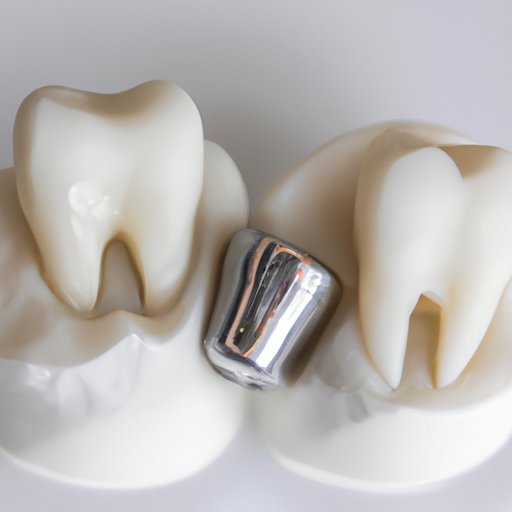
Understanding Dry Sockets: Causes, Prevention, and Treatment
Dry socket, also known as alveolar osteitis, is a painful condition that can develop after a tooth extraction procedure. It occurs when the blood clot that normally forms over the extraction site is dislodged or dissolves, exposing the bone and nerves in the socket. While dry socket is relatively rare, affecting about 2% of all tooth extractions, it can cause severe pain and discomfort. In this article, we’ll explore the causes of dry socket, how to prevent it, and the best treatment options.
Causes of Dry Socket: Understanding the Risk Factors and How to Avoid Them
To understand dry socket and how to prevent it, it’s important to know how it occurs. When a tooth is extracted, a blood clot forms over the socket to protect the underlying bone and nerves. The clot also helps to promote healing and prevent infection. If the clot becomes dislodged or dissolves too quickly, it can leave the bone and nerve endings exposed. This is what causes the intense pain associated with dry socket.
Several risk factors increase the likelihood of developing dry socket. Smokers, for example, are more prone to dry socket because smoking impairs blood flow and delays healing. Women who use birth control pills may also be at higher risk due to hormonal changes that affect blood clotting. Poor oral hygiene can also make it harder for the clot to form and stay in place. To avoid dry socket, it’s important to follow your dentist’s instructions carefully. This includes avoiding smoking and alcohol, which can interfere with healing, and eating only soft foods for the first few days after the extraction.
The Dos and Don’ts of Post-Extraction Care: Preventing Dry Socket
Taking proper care of your extraction site is crucial for preventing dry socket. You should avoid using straws, rinsing your mouth vigorously, or spitting excessively, as these actions can dislodge the blood clot. However, you should rinse your mouth gently with warm salt water to keep the area clean and avoid infection. It’s also important to maintain good oral hygiene by brushing and flossing regularly. Be sure to avoid smoking and drinking alcohol for at least 24 hours after the extraction, as these behaviors can slow healing and increase the risk of dry socket. Finally, stick to soft foods for the first few days to avoid irritating the extraction site.
Some common mistakes that patients make after extraction can also increase the risk of dry socket. Drinking from a straw can create suction that dislodges the blood clot, and eating crunchy or spicy foods can irritate the extraction site. Drinking alcohol or using tobacco products can also slow down the healing process, making it more likely for dry socket to develop. Avoid these behaviors to ensure a smooth recovery.
What is Dry Socket and How to Treat it: Insights from Dental Experts
If you suspect you have dry socket, it’s important to seek treatment from a dental professional as soon as possible. Your dentist will examine the extraction site and take X-rays to confirm the diagnosis. They may then prescribe painkillers or other medications to reduce pain and inflammation. In some cases, they may also apply medicated dressings to the extraction site to encourage healing and prevent infection.
It’s important to note that dry socket can be more difficult to manage than ordinary post-extraction pain, and it may take longer to resolve. However, rest assured that your dentist will be able to provide effective treatment options to relieve your symptoms and speed up the healing process.
Debunking Common Myths about Tooth Extraction and Dry Socket
There are many myths and misconceptions surrounding tooth extraction and dry socket. One of the most common is the belief that drinking through a straw can help prevent dry socket. In reality, using a straw creates suction that can dislodge the blood clot and increase the risk of dry socket. Another myth is that you should avoid eating on the side of the extraction site. While you should stick to soft foods for the first few days, you can resume eating normally as soon as you feel comfortable. Seek advice from your dentist about what foods to avoid and when to resume a normal diet.
A Comprehensive Guide to Recovery after Tooth Extraction: Tips to Prevent Dry Socket
To summarize, to prevent dry socket, you should follow your dentist’s instructions carefully, maintain good oral hygiene, and avoid behaviors that can inhibit healing, such as smoking and drinking. Stick to soft foods for the first few days after the extraction, and be sure to seek prompt treatment if you suspect you have dry socket. Remember, dry socket is a painful condition, but it’s also treatable with the help of a dental professional.
To ensure a smooth recovery from tooth extraction, be sure to rest and avoid strenuous activity for the first few days. Use ice packs to reduce swelling and pain, and take medications as directed by your dentist. Be patient, and don’t hesitate to seek advice or guidance from your dental team if you have any concerns or questions.
Conclusion
Taking proper care after tooth extraction is key to preventing dry socket. By following your dentist’s instructions and avoiding risky behaviors, you can reduce the likelihood of developing this painful condition. Remember to seek prompt treatment if you suspect you have dry socket, and don’t hesitate to ask your dental team for advice or guidance. With proper care and attention, you can enjoy a smooth and speedy recovery after tooth extraction.




